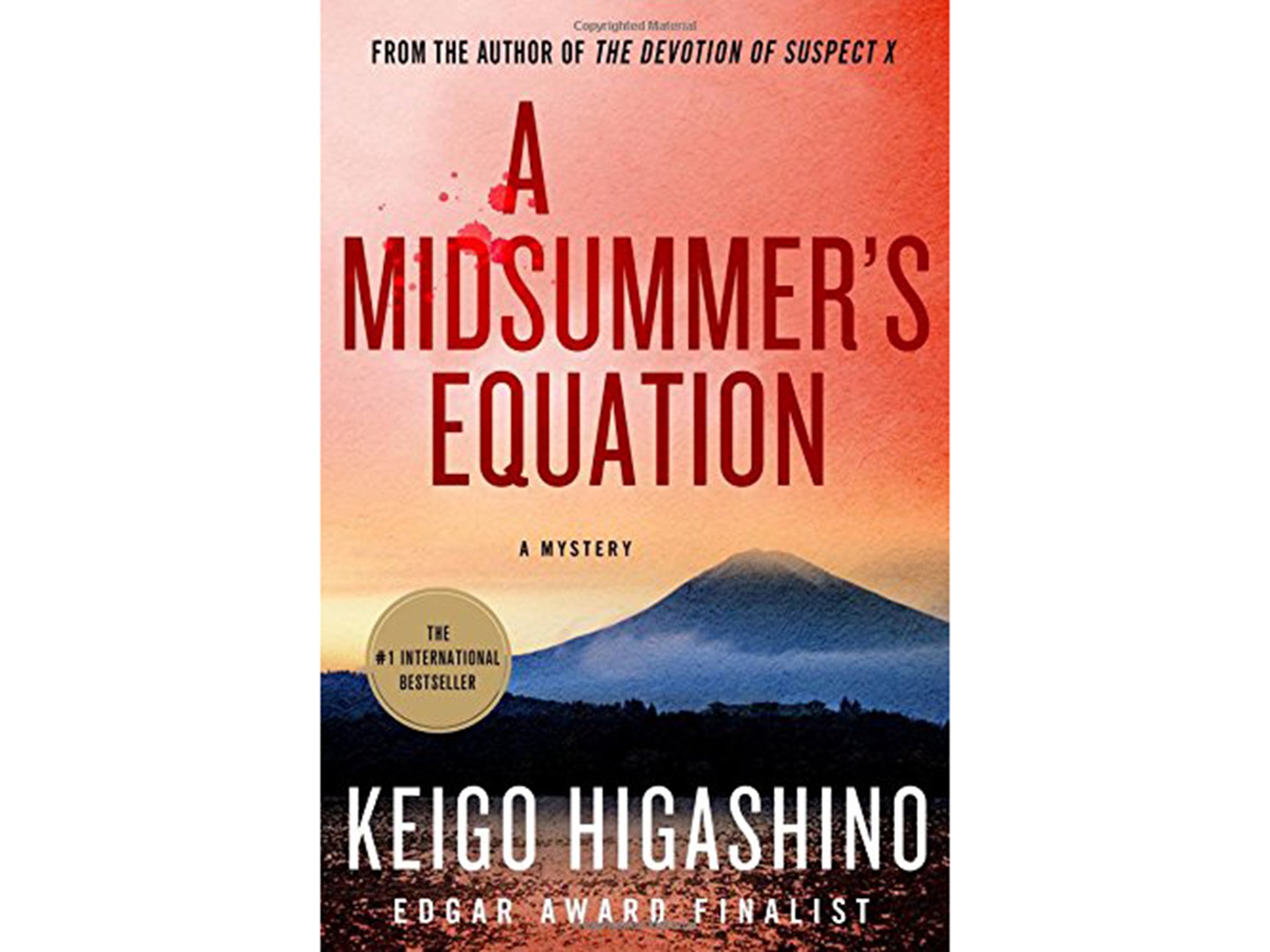A Midsummer's Equation by Keigo Higashino, review: Jaw-dropping twists help this sleuth tale shine
The book has some surprising resonances with the golden age of British crime fiction but there’s nothing wrong with that

Your support helps us to tell the story
From reproductive rights to climate change to Big Tech, The Independent is on the ground when the story is developing. Whether it's investigating the financials of Elon Musk's pro-Trump PAC or producing our latest documentary, 'The A Word', which shines a light on the American women fighting for reproductive rights, we know how important it is to parse out the facts from the messaging.
At such a critical moment in US history, we need reporters on the ground. Your donation allows us to keep sending journalists to speak to both sides of the story.
The Independent is trusted by Americans across the entire political spectrum. And unlike many other quality news outlets, we choose not to lock Americans out of our reporting and analysis with paywalls. We believe quality journalism should be available to everyone, paid for by those who can afford it.
Your support makes all the difference.At after-hours sessions in wine bars, publishers of crime in translation spend much time discussing where the next foreign crime wave may be coming from so that they can be ahead of the curve. But while both France and Germany are offering some likely prospects at present, a counterintuitive entry is making a mark, from a country not known (in the UK at least) for its crime fiction: Japan. Those who have encountered the complex but mesmerising narratives of Keigo Higashino have been alerted to a writer offering subtly different fare from most contemporary novels of detection: more steadily paced, richer in small details of character. The Devotion of Suspect X sold in prodigious quantities in Japan and while its successor, Journey under the Midnight Sun, didn’t reach the same stratospheric sales figures, it was still a palpable hit. Largely speaking, Higashino’s latest book to reach these shores, A Midsummer’s Equation, satisfyingly builds on the achievement of his earlier works and adds some new elements.
Hard-headed Tokyo homicide detective Shunpei Kusanagi and brilliant physics professor Manabu Yukawa, Higashino’s odd couple sleuthing duo, are wrenched from their stamping ground of the Japanese capital to travel to a small resort town for a conference on undersea mining prospects. The locale chosen for the discussion is Hari Cove, a town that has a variety of Damoclean swords hanging over its municipal head, from a severe economic decline to a possible environmental catastrophe. A more immediate issue for the pair, however, is the discovery of the corpse of a guest from the inn at which Kusanagi and Yukawa are staying. Masatsugu Tsukahara is found crumpled at the bottom of a cliff, apparently an accidental death. But Tsukahara was a retired Tokyo policeman – and his death was actually caused by carbon monoxide poisoning. What’s more, he was on the trail of a man he had arrested many years before for the killing of a nightclub hostess.
While Yukawa appears to be concentrating on experiments with young pupils, his detective colleague is finding the pursuit of a murderer somewhat more urgent. Needless to say, the analytical genius of the physicist will soon be pressed into service, and the novel throws off a series of jaw-dropping narrative twists. More than earlier books in the series, A Midsummer’s Equation has some surprising resonances with the golden age of British crime fiction but there’s nothing wrong with that. What is fully in place, however, is the narrative acumen that has distinguished early entries in the series.
Order for £15.99 (free p&p) from the Independent Bookshop: 08430 600 030
Join our commenting forum
Join thought-provoking conversations, follow other Independent readers and see their replies
Comments